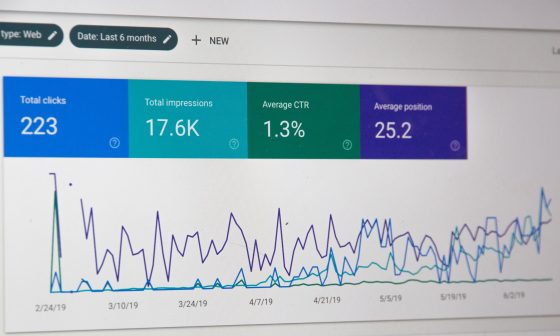AI is no longer a shiny experiment for agencies. It is steadily becoming the backbone of operations, driving efficiency while creating new growth opportunities.
To understand what this looks like in practice, I have started this blog series to go behind the scenes with agencies, to see how they’re actually using AI, the challenges they face, and the wins they’ve seen along the way.
In this series, I’m talking to:
Through these conversations, I aim to provide you with a clear understanding of how AI is transforming the way agencies operate. You’ll see how it can become a true partner in growth, pick up practical tips to apply in your own agency, learn from the challenges others have faced, and discover strategies that actually deliver results.
⭐️P.S. – Interested in contributing? I’d love to hear from more agency owners who are driving real change with their AI workflows!
- We conducted an extensive interview with Marketri’s founder, Debra Andrews. Marketri is a B2B marketing agency that helps businesses grow. They either act as your long-term, outsourced marketing team or step in for specific high-impact projects. Their focus is on creating and executing customized marketing strategies that deliver real, measurable results.
How Marketri is Using AI
The most impactful use of AI at Marketri has been in content creation. Traditionally, the agency relied on external copywriters, which meant higher costs and longer timelines, with marketing managers still having to spend significant time briefing and editing. Over the past six months, however, Marketri has replaced external copywriters with Connie, its in-house AI writing solution.
The Before and After
Before AI, Marketri had established best practices for AI-assisted writing, but figured the adoption of AI to be inconsistent. The team often ended up relying on external copywriters because, while the best practices helped, they did not reduce enough of the workload for managers.
That changed with the formation of Marketri’s AI Council: a group tasked with setting AI priorities and experimenting with solutions.
After hiring the Senior Director of AI Innovation, the agency was able to design Connie with specific non-negotiables in mind. The content had to be original. AI was only a copywriter, not a subject matter expert. The voice and tone had to match the individual consultant or client. And the process had to be easy, resulting in solid first drafts that could be quickly refined.
With Connie, the workflow is simple. Consultants select the type of content, attach a client profile, provide topic details, and submit their request. The system performs research, generates an outline, drafts the piece, critiques it, and saves the output to Marketri’s shared drive. Notifications are sent via Slack once the content is ready for review. This streamlined process has eliminated the dependency on external writers and significantly reduced turnaround times.
Time and Cost Savings
The numbers speak for themselves. A content piece that would previously take four hours with an external writer now takes about one and a half hours with Connie. In the first six months alone, Marketri expects savings between $50,000 and $75,000. Since Connie has not yet been used directly on client projects, Debra Andrews, the Founder and expects these savings to increase even further as adoption expands.
AI Workflow
Marketri has gone a step further by building a repeatable prompt-and-automation framework that consistently delivers high-quality content. The in-house system combines engineered prompts, content templates, retrieval augmented generation (RAG), and automation.
Here’s how it works:
Step 1: Consultants choose the type of content they want to create.
Step 2: They attach a specific client profile so the system can pull in brand details, tone, and voice.
Step 3: They provide topic details and instructions.
Step 4: The automation ingests the input, conducts up-to-date research, creates and refines the outline, drafts the content, and even critiques the output.
Step 5: The final version is saved to Marketri’s shared file space, and the requesting consultant is notified for review and final adjustments.
This process has given Marketri a scalable way to ensure every piece of content reflects the right voice, brand standards, and originality while minimizing manual effort.
Tools Behind the System
Marketri’s AI stack is a combination of flexible and affordable tools:
- OpenAI and Perplexity for content creation and research
- Pinecone for RAG data storage
- Google Drive for output storage
- Slack for notifications
- n8n for managing automation
These were chosen for their ease of integration and potential to scale across future use cases.
Unexpected Benefits
One of the most notable outcomes has been the improvement in writing quality. Since AI handles the heavy lifting of copywriting, consultants now spend more time on the strategic thinking behind content. This has also encouraged wider participation in thought leadership. Team members who previously felt hesitant to write are now more engaged, knowing AI will support them in the drafting process.
New Revenue Streams
Marketri’s embrace of AI is not only improving internal workflows but also shaping new client offerings. This has helped the agency to open up an extra revenue stream, which is launching its AI Accelerator, a 90-day program designed to help mid-sized companies with in-house marketing teams move from AI-novice to AI-emergent. This program addresses a common challenge Debra has observed: companies struggling with paralysis around AI adoption. The AI Accelerator aims to give them a structured path forward.
Takeaway
One of the most useful parts of Marketri’s AI setup is the way they handle long-form content. They don’t hand everything over to AI. Instead, they start with their own ideas, let AI do the heavy lifting with research and drafting, and then finish with a strong human edit. It’s simple, practical, and works reliably.
👉Here’s what the workflow looks like
- Start with an original idea or concept.
- Use AI to research the topic and test the idea.
- Pull out the most relevant insights and add Marketri’s own perspective.
- Run it through consistent prompts in a storyteller voice to generate a first draft.
- Edit and refine until the content is polished and ready to publish.
This way, the content stays original and strategic but still saves a lot of time.
- Next, I spoke with Leury Pichardo, Marketing Lead at Digital Ceuticals, about how he’s making use of AI in his day-to-day workflows and reshaping the way his team operates.
How Digital Ceuticals is Using AI
Leury Pichardo, the Marketing Lead, oversees the strategy that makes this happen. Over the past six months, the agency has integrated AI into its workflow in a way that has dramatically increased efficiency and output.
Before and After AI
Before using the AI workflow, creating content briefs was slow and manual. Strategists had to open 15 browser tabs, figure out why certain articles ranked for a keyword, and spend 30 minutes to 2 hours copying headings into tools like Dynalist. They would guess at common themes and try to build a cohesive outline. The briefs ended up being inconsistent, subjective, and time-consuming, especially for senior strategists.
Now, the top 10 ranking URLs are fed into NotebookLM. The AI acts like a data analyst, creating a content outline that covers all key themes and answers the questions found in those articles. This takes about 30 minutes per brief and produces a consistent, high-quality blueprint. Strategists then review it, adding unique brand insights or proprietary data, making the final plan both data-driven and customized.
The final briefs are converted into tasks in Trello, complete with all requirements, attachments, and deadlines, which integrates the AI workflow seamlessly into the agency’s project management system.
For example: Dynalist outline
Time, Cost, and Effort Savings
Before AI, producing 20 content briefs per week required approximately 40 hours of work, equivalent to nearly two full-time strategists dedicated solely to research and outlining. With the AI-assisted workflow, the same output now takes only about 10 hours per week. This translates to a savings of 30 hours per week, freeing the team to focus on higher-value tasks such as competitive analysis and strategic planning. The workflow amplifies the strategic output of the team without increasing headcount.
Tools Behind the System
Digital Ceuticals relies on a combination of AI tools and platforms:
- NotebookLM – for content analysis and blueprint generation.
- Google Gemini – for reviewing, refining, and adding strategic enhancements to AI-generated content outlines.
NotebookLM was chosen because it has no real alternative for source-based analysis, while Gemini integrates smoothly with the agency’s existing Google ecosystem.
Unexpected Benefits
One of the biggest surprises with this workflow has been how it helps with training and onboarding. Before, new SEO strategists had to shadow senior team members for months just to pick up the “gut feel” of what works.
Now, the AI captures the decision-making of the agency’s best strategists and turns it into a repeatable, data-driven system. New hires can get up to speed in weeks instead of months. The AI doesn’t just scale output, it scales expertise too.
Replicating The Workflow
To replicate this process, another agency owner should follow four key steps:
1️⃣Identify the target keyword and copy the URLs of the top 10 ranking pages. This gives a clear snapshot of what Google currently rewards for that query.
2️⃣Feed the URLs into NotebookLM and use a master prompt that instructs the AI to act as a data analyst. The AI identifies user intent, key topics, and essential questions and produces a logical outline based only on the sources provided.
3️⃣Paste the AI blueprint into Google Gemini for human strategist review. The strategist adds brand-specific perspectives, proprietary insights, and narrative adjustments to ensure the final brief is unique and strategic.
4️⃣Convert the final brief into a Trello task card, including all instructions, attachments, and deadlines, to assign to writers.
What Not To Do
Early experiments with AI involved asking it to generate full article drafts, but the results were poor. The content was generic, soulless, and factually unreliable. Human editors spent more time correcting drafts than it would have taken to write the content themselves.
The breakthrough came when the team shifted AI to the beginning of the process, using it to analyze top-performing content rather than generate it. AI now identifies patterns and structures, allowing human writers to focus on creativity, expertise, and strategy. This pivot transformed AI from a failed junior copywriter into a powerful senior strategist.
How Webheads is Using AI
For JM Littman, Founder of Webheads, AI has shifted from being an experimental tool into something that actively drives how projects are delivered. Over the last six months, the agency has used AI in three core areas: content creation, UX prototyping, and client management. Together, these changes have cut down delivery times, improved quality, and created a smoother client experience.
Content and UX Workflows
Content was one of the first areas where AI made a real difference. On WestgateHire.com, the team needed multiple SEO-optimized service pages. Previously, writing one of these pages would take two to three days. The process involved research, structuring the copy, and several rounds of editing. With AI, the first draft is ready in a single day. Webheads uses a structured prompt formula built around audience, action, and SEO intent. This produces content that is roughly 80 percent complete from the first draft, with placeholders left in place for any specific details such as pricing or unique service information. The team then reviews and fine-tunes the draft, ensuring accuracy and the right brand voice. The speed comes from AI, but the polish comes from the human layer on top.
On Weareadaptive.com, the challenge was around UX. Wireframes and flow sketches used to take a week of back and forth before they reached a stage where clients could give feedback. Now, AI allows the team to generate usable wireframes within a day. This has completely changed how Webheads approach prototyping. Instead of spending a week sketching ideas, the team can start testing and iterating almost immediately. That means clients see value faster and design projects progress with far less lag.
Meetings and Operations
Meetings are another area where AI has unlocked big gains. Webheads integrated Sembly, which automatically records, transcribes, and summarizes every call. Before this, project managers or team members would have to scramble to capture notes. Important details sometimes slipped through the cracks, and handovers between team members were not always seamless.
Now, every meeting ends with a clear transcript, a summary, and an action list. These are searchable and can be shared with the team, so everyone stays aligned. The difference is more than just convenience. Calls are no longer about frantically typing notes. The team can stay fully engaged in the conversation, knowing that the details will be captured accurately. In practical terms, this saves around half an hour per call and ensures nothing gets missed. For an agency handling multiple projects at once, that is a huge reduction in wasted time and a big improvement in clarity.
Visual Enhancements
Not every client comes with a full set of polished assets. On WestgateHire.com, the car photography provided was inconsistent. Some images were low resolution, others lacked professional backgrounds, and overall the set did not look cohesive. In the past, solving this would have meant booking a photographer for a full reshoot or spending hours cleaning images manually in Photoshop. Both options were time-consuming and expensive.
Instead, Webheads used AI tools for upscaling, sharpening, and background clean-up. Within hours, they produced a complete library of consistent, professional-looking visuals that matched the site’s design. This not only saved costs but also allowed the client to launch faster with a polished, uniform look across their website.
Results and Impact
The results have been tangible across the board. Content workflows are now between 60 and 70 percent faster, which means client websites go live sooner. UX prototyping has been compressed from weeks into days, allowing clients to give feedback earlier and feel more engaged in the design process. Meeting administration has been cut down dramatically, saving hours each month while improving accuracy. Even something as straightforward as cleaning up client visuals now takes a fraction of the time it once did.
Clients have noticed the difference. On Westgate, the quick turnaround for SEO pages opened the door to a longer-term content strategy engagement. On Adaptive, the ability to produce rapid prototypes gave clients confidence to expand the project scope. For Webheads, AI has not just improved efficiency. It has improved client perception and created more opportunities for growth.
Using AI to Win Business
Beyond project delivery, JM Littman has also used AI strategically during pitches. One example involved a large investor relations report, hundreds of pages long. Instead of wading through dense financial language, JM used Google’s AI podcast tool to summarise the report into digestible insights. That preparation meant he could walk into the client meeting already aligned with their priorities, speaking their language, and framing ideas in terms that resonated. That kind of preparation builds instant trust.
Webheads now uses AI as a built-in checkpoint for every pitch. It reviews proposals to ensure the agency is directly addressing what the client is asking for and flags any gaps that might weaken the pitch. It is not writing the pitch, but it is sharpening and validating it. That extra layer of confidence has directly contributed to winning new clients.
Lessons Learned
The journey has not been without missteps. Early experiments involved trying to let AI write entire pieces of content, which often resulted in text that was unnatural or factually inaccurate. Now, the approach is clear: AI creates the structure and does the heavy lifting, but humans always finish the job. Similarly, with meeting transcripts, the team quickly learned not to trust the AI blindly. Transcripts are accurate most of the time, but important calls still get a quick human review.
For JM Littman, the biggest lesson has been that AI delivers the most value when it tackles the repetitive tasks that slow agencies down. Content structuring, UX prototyping, meeting admin, asset clean-up, and data analysis all fall into that category. The creative and strategic elements still come from the team, but the time-consuming work that used to clog up projects now happens faster and more reliably.


